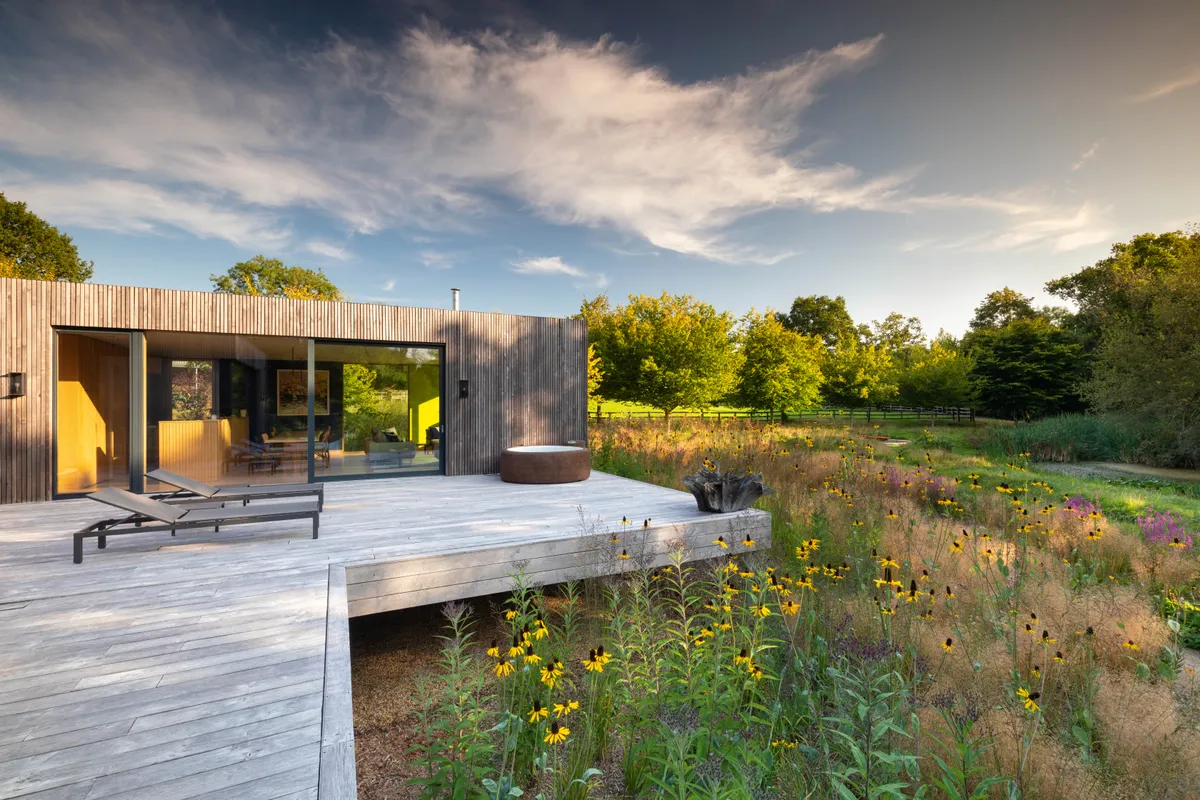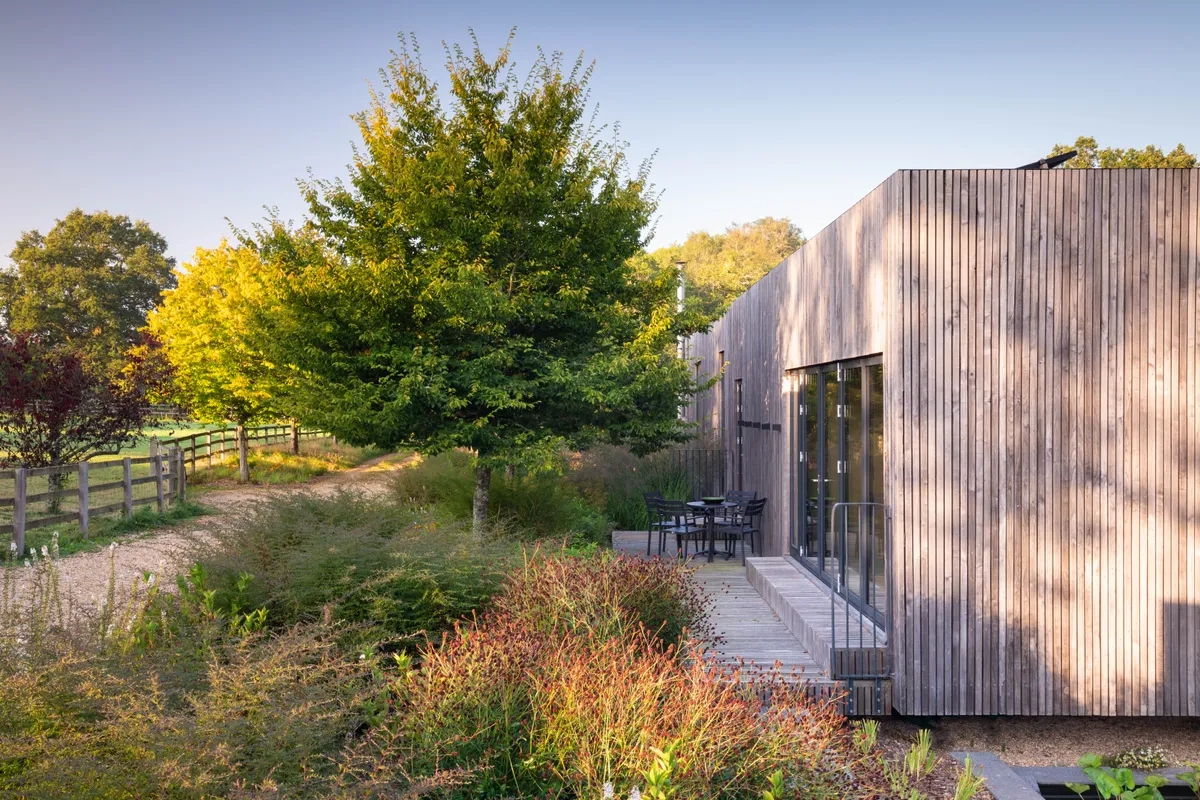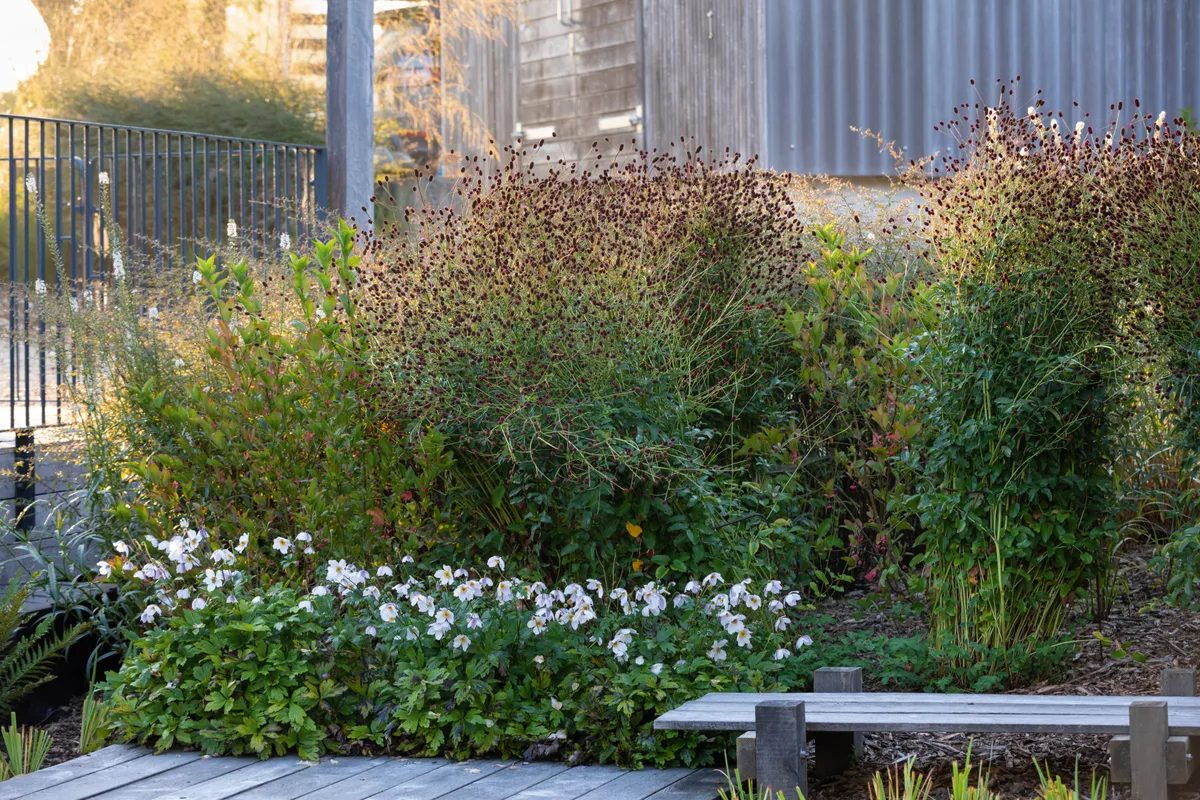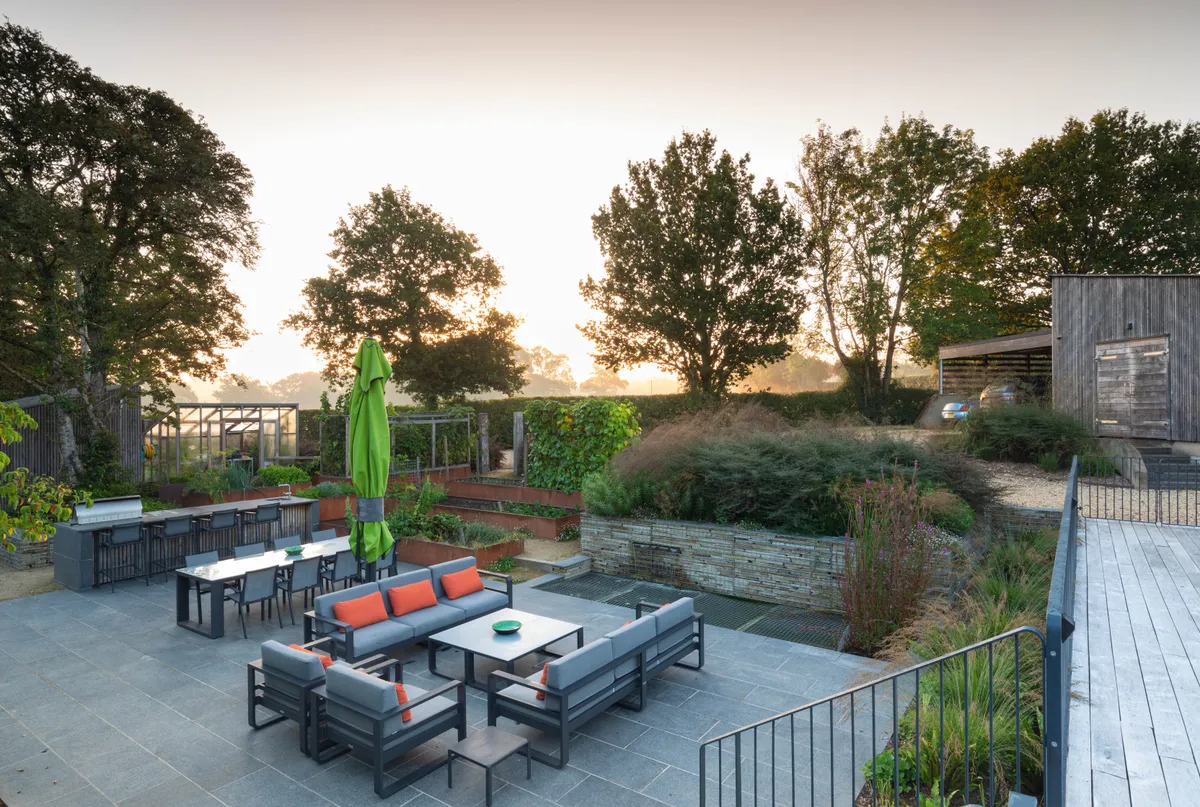It took 12 years to surmount the logistical and planning hurdles involved in building this dream New Forest home – a pair of eco-friendly, chestnut-clad cubes, joined by a generous oak deck, floating on 16 steel piles above the ground. They look out over gently sloping land to a wildlife pond busy with ducks and dragonflies, and the pristine wild woodland beyond. “We didn’t want the house and garden to dominate the land,” explains David Johnston, the owner. “We think of them as part of the forest edge.”
For Helen Elks-Smith, who was brought in to create the garden, the challenge was twofold. She needed to create a scheme that touched gently on the surrounding New Forest landscape, and successfully integrate the new home with its sylvan setting. Within that, she had to create a generous dining terrace and an efficient vegetable garden.
IN BRIEF
What A naturalistic country garden designed to blend with its forest setting.
Where Hampshire.
Size 3,000 square metres
within 50 acres of woodland.
Soil Clay.
Climate One of the driest and sunniest areas of southern England.
Hardiness zone USDA 9.
On the entrance side of the house, the lie of the land is cleverly exploited to create the impression of a sunken garden, enclosed by rising tiers of raised beds edged in Corten steel. A length of gabion wall has a practical function in retaining the slope, but cleverly doubles as a water feature, discharging a glittering stream from a letterbox chute to a fishpond below. The geometry is precise, echoing that of the sleek modern buildings and sharp-edged pools that flank the walkway leading to the house, but all is softened by the graceful form of the existing old Cornus kousa and a broad bed of diaphanous ornamental grasses that seem to hover, cloud-like, above the water chute.
To the eastern side of the house, a double row of hornbeams turns an access track running into the woods into a bucolic version of a formal avenue. To the south and west, all formality is forgotten, in a loose, richly textured planting where rudbeckias, sanguisorbas, asters and ironweed combine with grasses selected for their winter form, creating a naturalistic scene that sweeps round the house and flows gently downhill to merge comfortably into ungardened areas of grass and wildflowers skirting the stream and pond.
“All successful gardens are negotiations with their surroundings,” says Helen, “but here it was particularly important to gain a thorough understanding of the site, and to respect the rhythms of the landscape.” So while the productive garden, enclosed by walls and hedges, could be neat and orderly, the ornamental garden had to “let a breath out”, and defer to the beauty of the forest. "It is all exactly as we hoped,” says David.

The deck seems to hover above a cloud of Deschampsia cespitosa ‘Goldtau’ and purple moor grass, Molinia caerulea subsp. arundinacea ‘Transparent’. Original plantings of tall Rudbeckia maxima are augmented by further rudbeckias grown by owner David Johnston from a free packet of seeds.

Shadows cast by the hornbeams and tall perennials serve to camouflage walls of weathered chestnut. Perennials here include dark-leaved Michaelmas daisy Symphyotrichum ‘Coombe Fishacre’, sanguisorbas and spires of Lysimachia ephemerum.

The pink flowerheads of Lythrum virgatum ‘Dropmore Purple’ and bright yellow of Rudbeckia maxima add colour and height to the planting, which rises a good metre above floor level, creating a feeling of being enveloped by plants.

The water chute mirrors the strong horizontals of the gabion wall, while a stout grille protects the fishpond below from marauding herons.

Helen often employs Sanguisorba ‘Joni’ in late summer plantings. With its bobbles of burgundy flowers suspended on tall stems, she finds it a more graceful alternative to popular Verbena bonariensis. Here she has combined it with Anemone Wild Swan (=‘Macane001’).

David especially likes the purple moor grass, Molinia caerulea subsp. arundinacea ‘Transparent’ for the way it lives up to its name, here softening the angularity of the kitchen garden and adjacent workshop.

At the heart of the vegetable garden is a space for entertaining with outdoor kitchen, where its plenty can be enjoyed.

Amsonias and vernonias are among the more unusual perennials included in the planting, along with a striking large- flowered burnet, Sanguisorba ‘Blackthorn’.
USEFUL INFORMATION
Find out more about Helen’s work at elks-smith.co.uk
